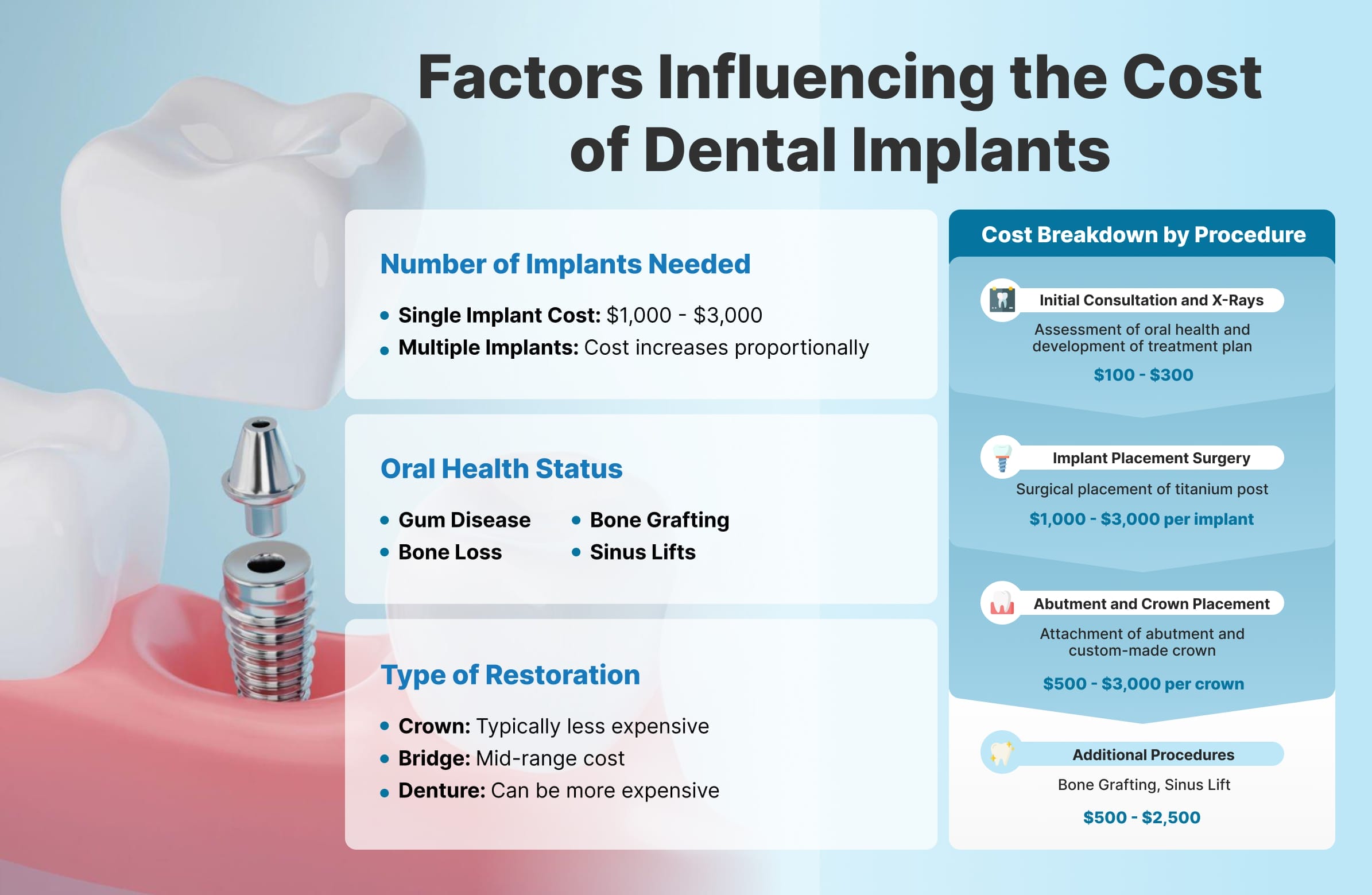Dental Sense Fundamentals Explained
Dental Sense Fundamentals Explained
Blog Article
Not known Details About Dental Sense
Table of ContentsThe Dental Sense PDFsNot known Details About Dental Sense The 20-Second Trick For Dental SenseThe 15-Second Trick For Dental Sense
are clinical gadgets surgically dental implanted into the jaw to recover a person's capacity to eat or their appearance. They provide assistance for man-made (phony) teeth, such as crowns, bridges, or dentures. When a tooth is shed as a result of injury or illness, a person can experience complications such as fast bone loss, defective speech, or changes to chewing patterns that result in discomfort.Dental dental implant systems include a dental implant body and oral implant abutment and may likewise include an abutment fixation screw. Dental implants. The oral implant body is surgically placed in the jawbone instead of the tooth's root. The dental implant abutment is generally connected to the dental implant body by the abutment addiction screw and extends with gum tissues into the mouth to sustain the attached artificial teeth
(https://www.callupcontact.com/b/businessprofile/Dental_Sense/9469240)Framework of The Dental Implant System selecting oral implants, talk to your dental copyright about the potential advantages and risks, and whether you are a prospect for the procedure. Things to take into consideration: Your overall health and wellness is a crucial aspect in figuring out whether you are a good prospect for dental implants, how much time it will take to recover, and how much time the dental implant may remain in area.
Smoking might affect the recovery process and reduce the long-term success of the dental implant. The recovery process for the implant body might take a number of months or longer, throughout which time you normally have a short-term joint in place of the tooth. the oral implant treatment: Carefully adhere to the dental health guidelines offered to you by your oral service provider.
5 Simple Techniques For Dental Sense
Implant failure can result in the requirement for one more operation to deal with or replace the dental implant system. Restores the ability to chew Brings back cosmetic look Helps keep the jawbone from diminishing because of bone loss Protects the health of the surrounding bone and periodontals Aids maintain adjacent (nearby) teeth steady Improves top quality of life Damages to bordering natural teeth throughout dental implant positioning Injury to the surrounding cells throughout surgery, such as sinus opening Injury throughout surgery (as an example, fracture of bordering jawbone) Inadequate feature, such as really feeling like the teeth do not bite together usually A sensation that the tooth is loose or twisting in place arising from an abutment screw loosening up Implant body failure (looseness of the dental implant body) due to systemic infection, which might be much more likely in individuals with unchecked diabetes because of local infection in bone and gum tissues supporting the implant body due to delayed healing, which may be a lot more linked here most likely in individuals that smoke Trouble cleansing the gum tissues around the dental implant, resulting in poor dental hygiene Unattended periodontal illness Post-surgical tingling because of nerve impingement or damages Always notify healthcare carriers and imaging specialists that you have dental implants prior to any type of magnetic vibration imaging (MRI) or x-ray procedures.
FDA is not familiar with any unfavorable occasions reported for MRI or x-ray treatments with dental implants. Dental implants systems are typically made of products that adhere to global consensus requirements of the International Company for Standardization (ISO) or ASTM International. These standards have information of what makes a secure product.

An oral implant is a framework that changes a missing tooth. With screw-like tools, the cosmetic surgeon inserts a dental implant right into the jawbone, and it acts as an anchor for an artificial tooth, called a crown.
Fascination About Dental Sense
Some individuals are not eligible for dental implant surgical treatment. It is for oral surgeons to operate people with: acute illnessuncontrollable metabolic diseasebone or soft tissue disease or infectionIf these concerns are resolved, a person can have the surgical treatment. In, oral specialists avoid from operating individuals with: If individuals with any of the above undertake dental implant surgical treatment, there is a greater risk of the implant stopping working.

Dental dental implant surgery is a personalized process. It's not the very same for everyone. However the adhering to provides a basic introduction of what you can expect your dentist, oral cosmetic surgeon, periodontist or prosthodontist to do: Position the implant operatively. Offer you time to heal. Connect the blog post and final crown, bridge or denture.
Next off, your doctor will thoroughly put the dental implant right into your jaw. If your implant is near the front of your mouth, your dental professional will make a short-term tooth for you to use up until you heal.
Not known Details About Dental Sense
Your copyright can inform you what to expect in your situation. Throughout the healing phase, your jawbone must fuse to the dental implant. This procedure, called osseointegration, is essential for stability and lasting success. This procedure can take anywhere from 3 to 9 months. In some cases, it may take much longer.
Once your dental implant heals, your dentist can affix the joint (tiny adapter post) and your last restoration (crown, bridge or denture). This normally takes about one hour to complete and may call for a second small surgery. You should not really feel any kind of discomfort throughout your oral implant procedure because your company will utilize medication to numb your gums.
Report this page